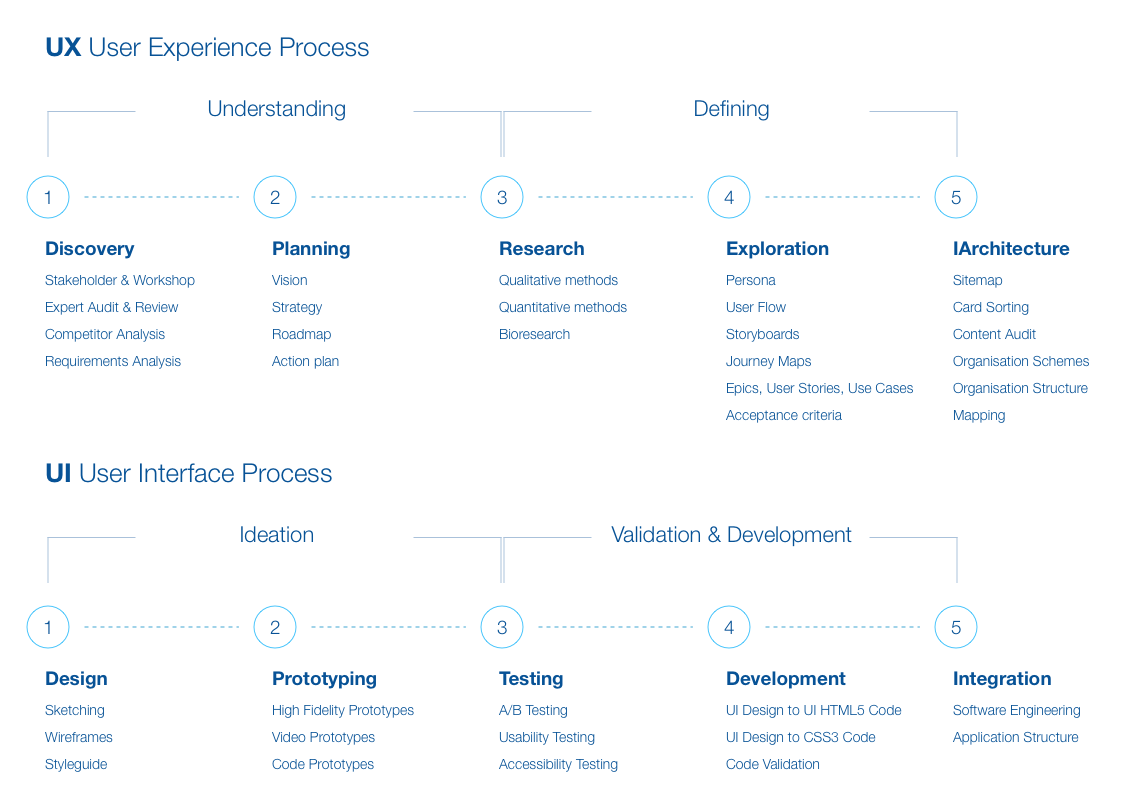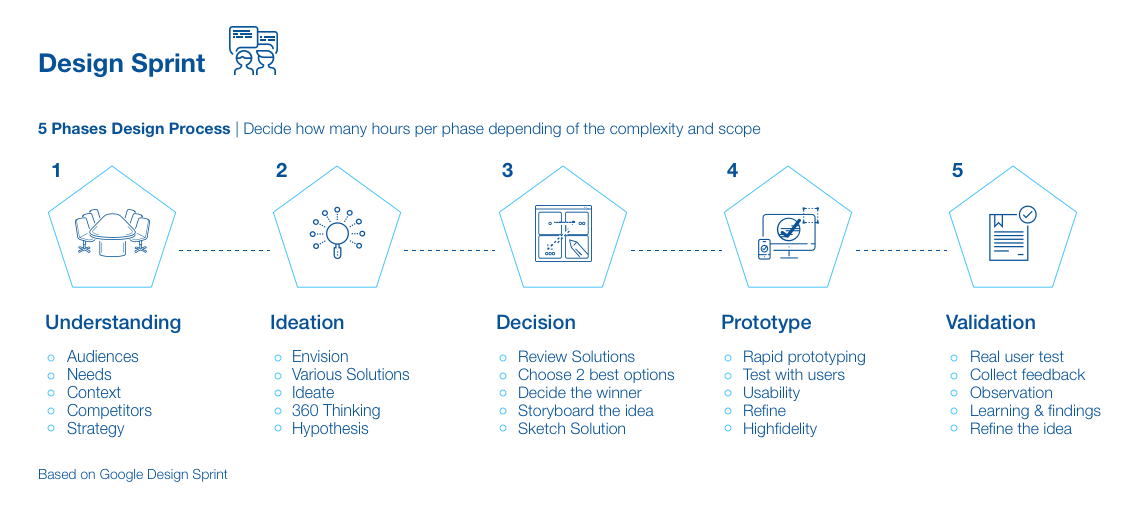



The UX & UI processes will change depending on the project, product, feature, problem to solve, improvements, enhancements, and goals to achieve...and this is because of the specific need of each item, story and use case. If the project is a greenfield project to discover, will be different that is on working to expand a vision or concept or just scale current systems.

Most of the projects and teams that I have worked with are using project management software well known as Jira that supports any agile methodology, scrum, kanban, or your unique custom setup to collaborate with the team members. Atlassian is one of the best software for agile project management. It has tools like Jira that allow agile boards to report, plan, track, and manage all agile software development projects from a single tool.



AD/CI/CD stands for Acceleration Design, Continuous Integration, and Continuous Delivery. It is a set of practices that help software development teams to deliver high-quality software products in a more efficient and faster way.
Introducing the future of enterprise software delivery - AD/CI/CD! With its cutting-edge Acceleration Design, Continuous Integration, and Continuous Delivery practices, AD/CI/CD is the most advanced software delivery process on the market today!